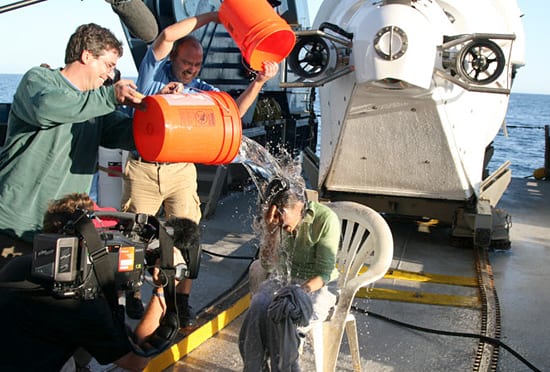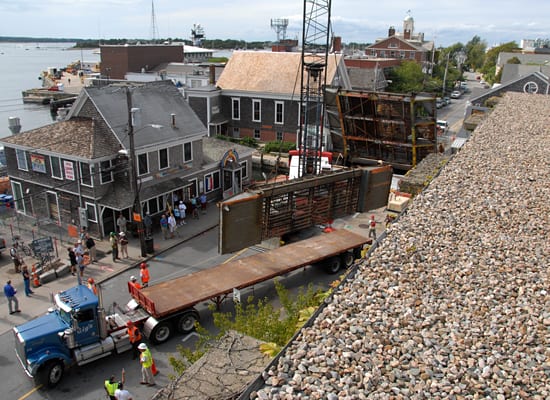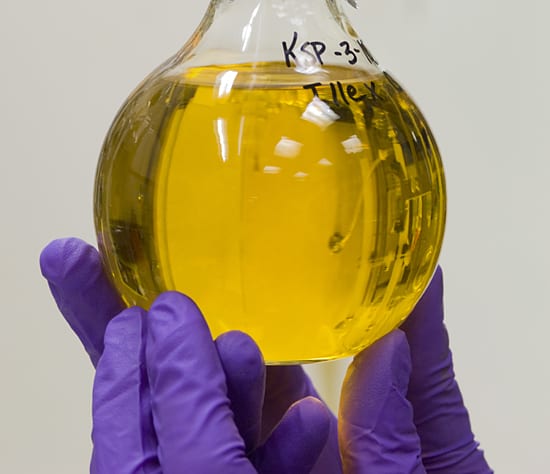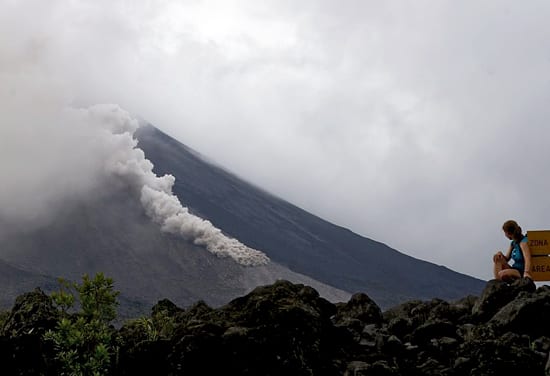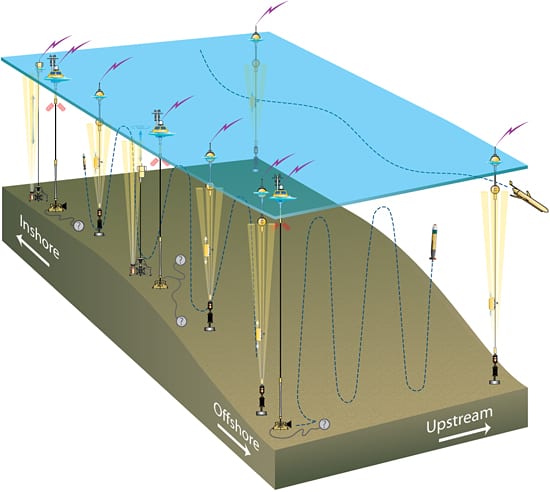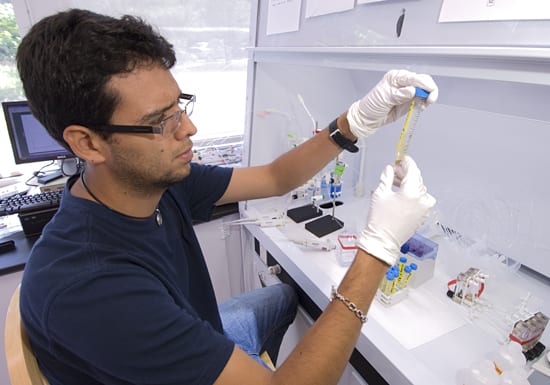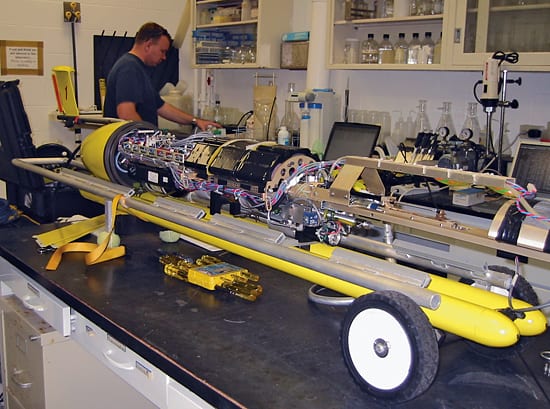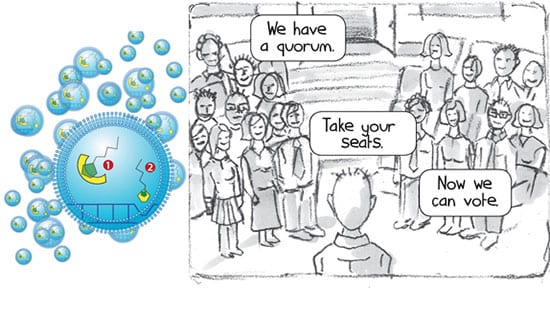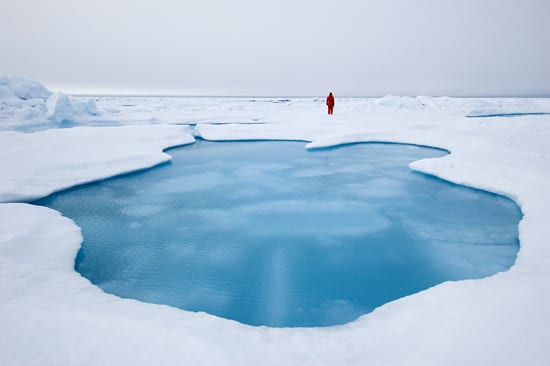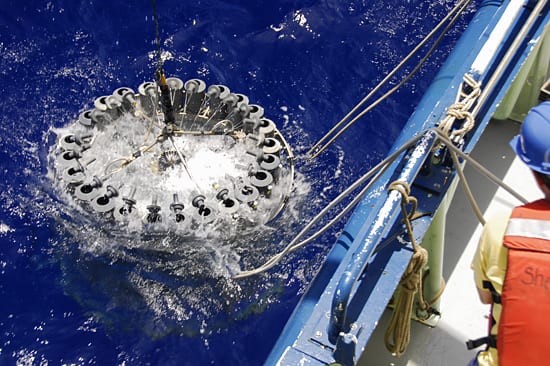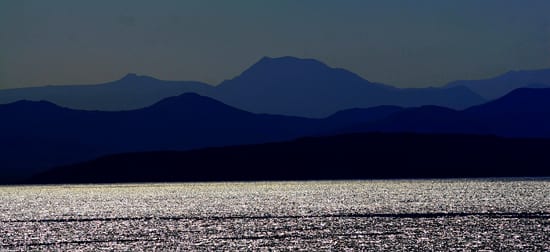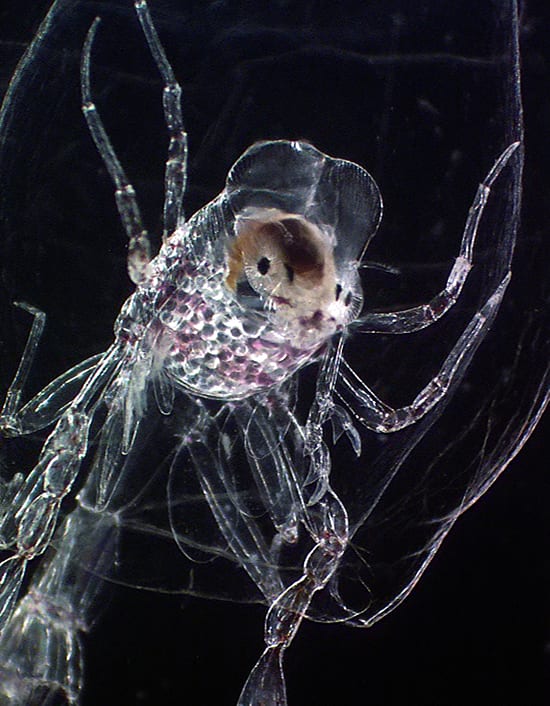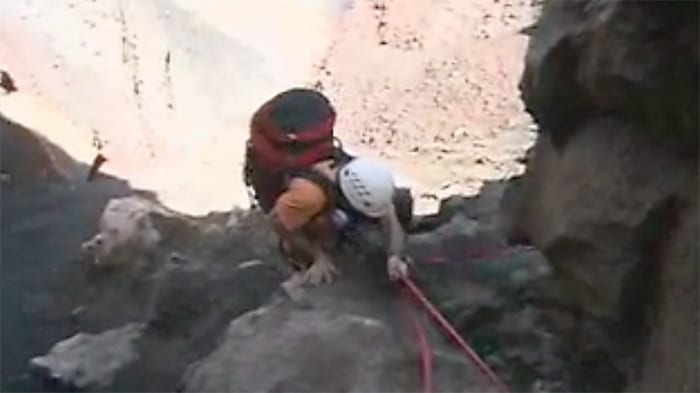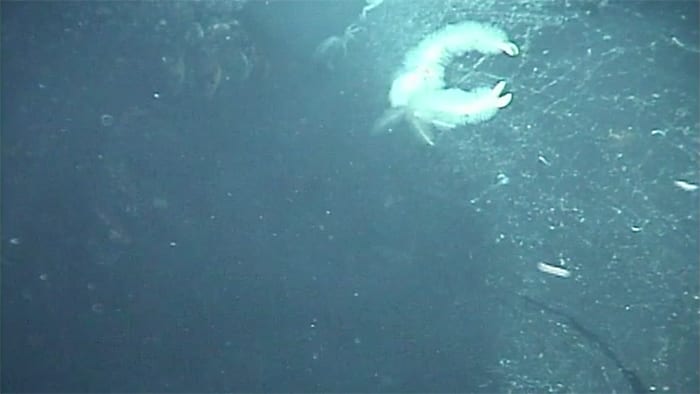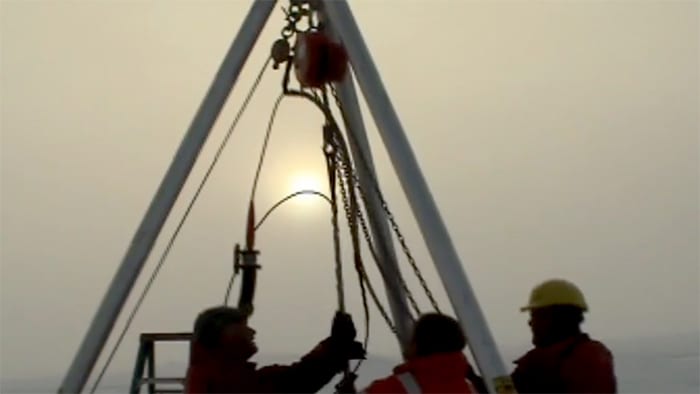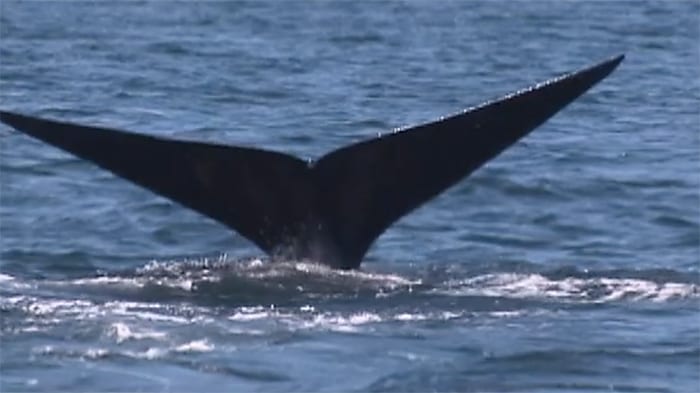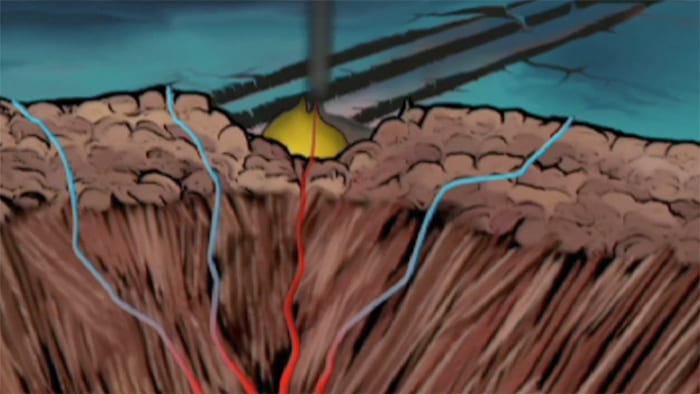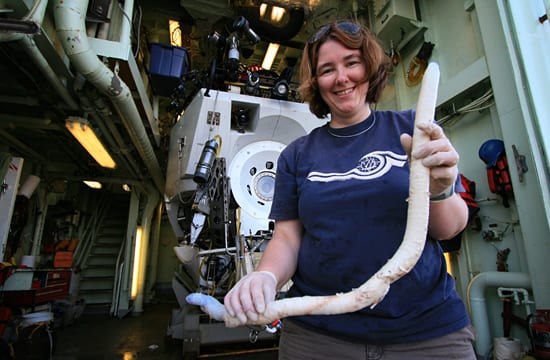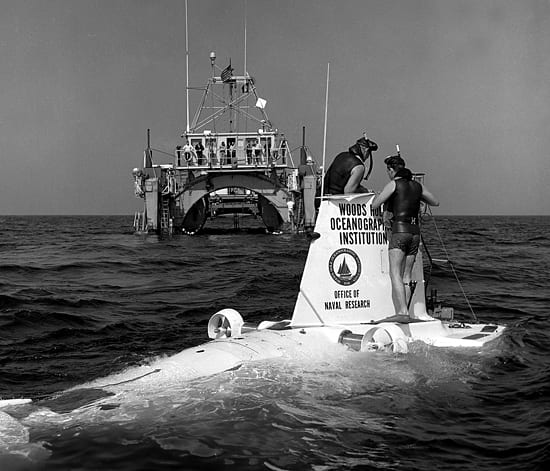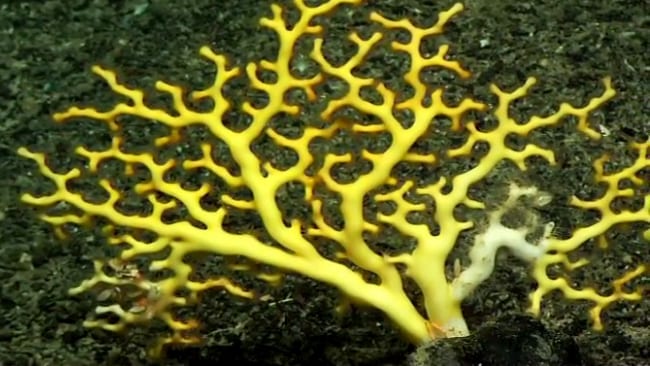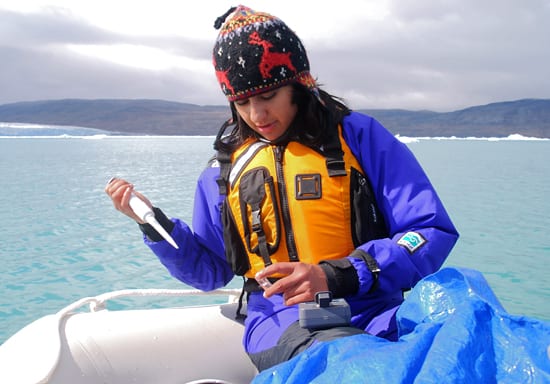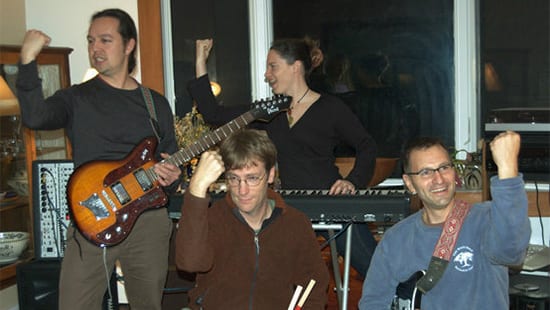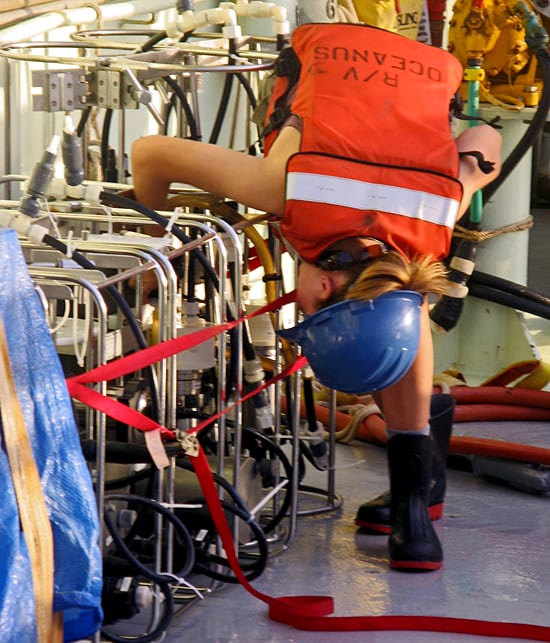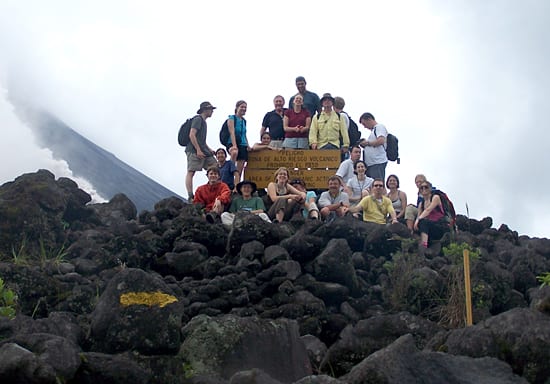Multimedia Items
Curry’s Soggy Rite of Passage
WHOI geochemist Jeff Seewald (green shirt) and biologist Stefan Sievert douse NBC “Today Show” host Ann Curry in icy seawater after her first Alvin dive. In addition to the traditional…
Read MoreBig happenings in a little village
Shortly after Labor Day 2008, workers began the monumental task of dismantling the 73-year-old Eel Pond drawbridge in the village of Woods Hole. Years of exposure to the elements deteriorated…
Read MoreLearning from Mother Nature
To understand how nature deals with persistent pollutants, MIT/WHOI Joint Program graduate student Kristin Pangallo analyzes marine animal extracts, such as the squid extract in the flask above, for biomagnified…
Read MoreFrom a safe perch
MIT/WHOI Joint Program student Evelyn Mervine paused to take in the beauty of Arenal Volcano during a June 2008 field study tour in Costa Rica. The pyroclastic flow from Arenal …
Read MoreGearing up for ocean observatories
Nearly a decade of community planning has gone into the Ocean Observatories Initiative (OOI), to be reviewed this month by the National Science Foundation. Among the innovative elements of the…
Read MoreA summer of chemical investigation
Jorge Barbosa, an undergraduate at the State University of New York School of Environmental Science and Forestry, spent summer 2008 as a WHOI Summer Student Fellow. Working in the laboratory…
Read More“Green” guts
Take a look at the guts inside a “green”-powered thermal glider, and you’ll find bundles of wires, but no motor to propel it. As Research Associate John Lund (in photo)…
Read MoreE pluribus unum, politically and biochemically
World of ice and water
A large melt pond and Arctic sea ice extending to the horizon dwarf a human figure, but human impacts on the Arctic may be growing larger than the ice itself.…
Read MoreSampling the sea
In August 2008 R/V Oceanus made a transect across part of the eastern Atlantic, from Barbados to Cape Verde. Chief scientist Edward Boyle (MIT) led a research group including Pheobe…
Read MoreBaja blues
As dusk descends upon the Gulf of California, shadows darken the painted badlands of Mexico’s Baja Peninsula. Atlantis’ 2008 Baja expedition yielded geological samples valuable in tracing the rate of…
Read MoreHobgoblin from the depths
Seen from below, a creature between terrifying and unbelievable appears to fly by, with huge eyes and outstretched claws holding a clear parachute. Actually an inch long, this oceanic animal…
Read MoreThe Volcano Explorer
Ken Sims explains why he works at Masaya, his interest in volcanoes worldwide, and what an oceanographer can learn from volcanoes on land. By Amy Nevala :: Originally published online…
Read MoreYeti Crab
Many crab species live at hydrothermal vents, scavenging and eating other organisms. In 2005 scientists in Alvin (the shadow you are seeing) discovered this big white crab with long “fur”…
Read MoreIce-Tethered Profiler Deployment
WHOI researchers deploy a new instrument, an Ice-Tethered Profiler (ITP). The ITP has a small yellow surface capsule that dangles an anchored 800-meter (2,265-foot) line through a hole in an…
Read MoreNorth Atlantic Right Whale
Dr. Michael Moore talks about the North Atlantic Right Whale and what the future may hold for this endangered charismatic species. Originally published online January 1, 2006
Read MoreHydrothermal Vents
WHOI researcher Susan Humphris explains what hydrothermal vents are and why they are important. Originally published online January 1, 2006
Read MoreGiant worm from the deep sea
MIT/WHOI Joint Program student Kate Buckman stands in front of the submersible Alvin, holding the iconic animal from undersea hydrothermal vents: a giant tubeworm (Riftia pachyptila.) The fast-growing worms have…
Read MoreThe once and future Alvin
A photo, circa 1967, shows the research submersible Alvin with two support swimmers, as crew watch from Lulu, Alvin’s first tender ship. WHOI still operates the U.S. Navy-owned Deep Submergence…
Read MoreDeep-sea Corals
By Kristen M. Kusek, Tim Silva :: Originally published online November 6, 2007
Read MoreWater is terrific! Bugs? Not so hot
Maya Bhatia, a doctoral student at WHOI, took hundreds of water samples this summer to learn about water chemistry during seven weeks of research in western Greenland. Bhatia, who works…
Read MoreResearchers Band Together to Create a Band
By Elise Hugus :: Originally published online October 27, 2008
Read MoreLooking it over
MIT/WHOI Joint Program student Stephanie Owens isn’t on a jungle gym—she’s checking specialized pumps used to filter water collected at various depths in the ocean and extract trace amounts of…
Read MoreGoing with the flow
MIT/WHOI Joint Program graduate students and their instructors take a break from hiking for a group photo at the base of Arenal Volcano in Costa Rica during a June 2008…
Read More
